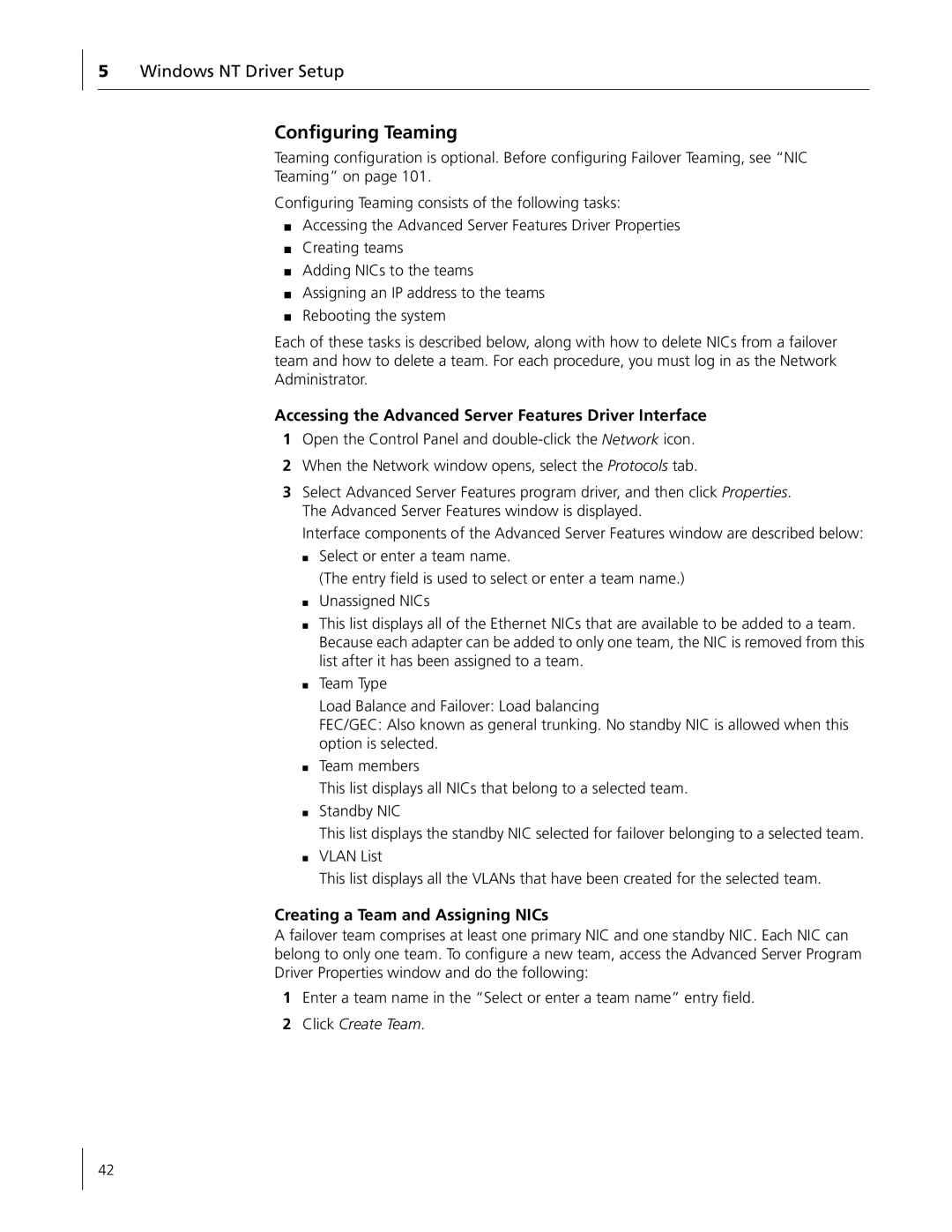
5Windows NT Driver Setup
Configuring Teaming
Teaming configuration is optional. Before configuring Failover Teaming, see “NIC Teaming” on page 101.
Configuring Teaming consists of the following tasks:
■Accessing the Advanced Server Features Driver Properties
■Creating teams
■Adding NICs to the teams
■Assigning an IP address to the teams
■Rebooting the system
Each of these tasks is described below, along with how to delete NICs from a failover team and how to delete a team. For each procedure, you must log in as the Network Administrator.
Accessing the Advanced Server Features Driver Interface
1Open the Control Panel and
2When the Network window opens, select the Protocols tab.
3Select Advanced Server Features program driver, and then click Properties. The Advanced Server Features window is displayed.
Interface components of the Advanced Server Features window are described below:
■Select or enter a team name.
(The entry field is used to select or enter a team name.)
■Unassigned NICs
■This list displays all of the Ethernet NICs that are available to be added to a team. Because each adapter can be added to only one team, the NIC is removed from this list after it has been assigned to a team.
■Team Type
Load Balance and Failover: Load balancing
FEC/GEC: Also known as general trunking. No standby NIC is allowed when this option is selected.
■Team members
This list displays all NICs that belong to a selected team.
■Standby NIC
This list displays the standby NIC selected for failover belonging to a selected team.
■VLAN List
This list displays all the VLANs that have been created for the selected team.
Creating a Team and Assigning NICs
A failover team comprises at least one primary NIC and one standby NIC. Each NIC can belong to only one team. To configure a new team, access the Advanced Server Program Driver Properties window and do the following:
1Enter a team name in the “Select or enter a team name” entry field.
2Click Create Team.
42
